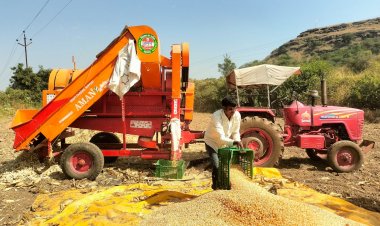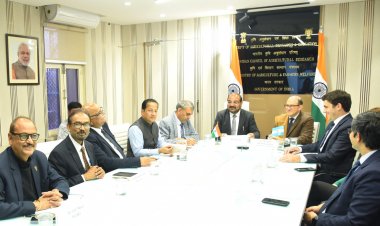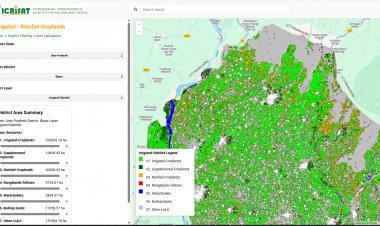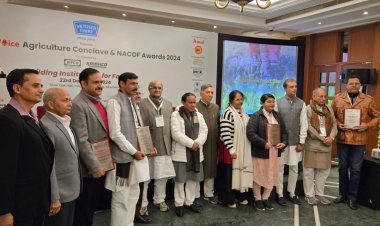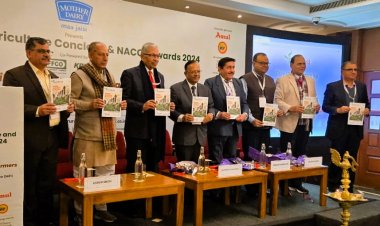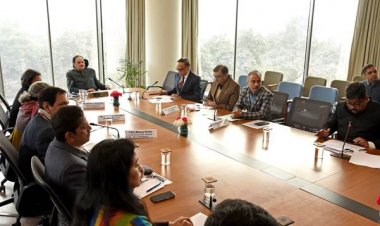Fifteenth Finance Commission recommendations on decentralisation are based on accountant approach and not on economist
From a decentralization point of view, fifteenth Finance Commission's recommendations are based on accountant approach and not on economist approach examining the phenomenon holistically.
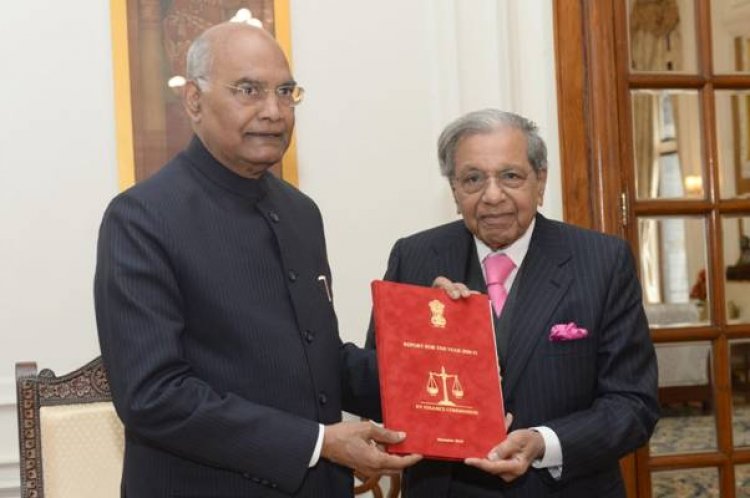
The Fifteenth Finance Commission (FFC) was constituted on 27 November 2017. It submitted its report to the President on 9 November, 2020. One of the terms of references of the FFC was that the Commission may consider proposing measurable performance-based incentives for states, at the appropriate level of government, among others, in the areas of (i) provision of grants in aid to local bodies for basic services, including quality human resources, and implementation of performance grant system in improving delivery of services and (ii) progress made in sanitation, solid waste management and bringing in behavioral change to open defecation. It may be mentioned that local bodies cover both Panchayati Raj Institutions (PRIs) and urban local bodies. But in this article, PRIs are being discussed.
Table 1
Grants to Local Governments in Rs crore
|
Grants |
2021-22 |
2022-23 |
2023-24 |
2024-25 |
2025-26 |
Total |
|
80207 |
82613 |
85091 |
89997 |
90003 |
427911 |
|
(a) Grants for primary health sector |
13192 |
13192 |
13851 |
14544 |
15272 |
70051 |
|
(b) Other grants to be disbursed among the local bodies excluding (a) above |
67015 |
69421 |
71240 |
75453 |
74731 |
357860 |
|
Inter se distribution of grants at (b) above between RLB and ULB |
67 : 33 |
67 : 33 |
66 : 34 |
66 : 34 |
65 : 35 |
- |
|
(I) Grants for RLBs |
44901 |
46513 |
47018 |
49800 |
48573 |
236805 |
|
(ii) Grants for ULBs |
22114 |
22908 |
24222 |
25653 |
26158 |
121055 |
|
2. Grants for incubation of new cities |
|
2000 |
2000 |
2000 |
2000 |
8000 |
|
3. Grants for shared municipal services |
90 |
90 |
90 |
90 |
90 |
450 |
|
Grand Total (1+2+3) |
80297 |
84703 |
87181 |
92087 |
92093 |
436361 |
Table 1 depicts the share of PRIs (Rural Local Bodies or RLBs) and Urban Local Bodies (ULBs). Out of the total grant earmarked for both PRIs and ULBs, Rs 2,36,805 crores has been earmarked for PRIs. The year-wise share of PRIs and ULBs is also given in the table. The other grants meant for health and cities are also indicated in the table.
It is interesting to note that in the last Finance Commission, grant was given only to Gram Panchayats (GPs) whereas the FFC has covered all the tiers (the lowest level, intermediate level and apex level) of PRIs. Not only this, all areas, whether they have Panchayats or not, have also been covered under the grant of the FFC. The Sixth Schedule areas and Other Schedule areas come under this. These areas are situated in the North-East of the country. About the allocation of funds among different tiers, the FFC says that the inter-tier distribution is on the basis of the recommendation of the latest SFC and in conformity with the following bands of:
- not less than 70 per cent and not more than 85 per cent for GPs
- not less than 10 per cent and not more than 25 per cent for Block Panchayats
- not less than 5 per cent and not more than 15 per cent for Zila Panchayats,
Eligibility Criteria for Rural Local Bodies to Avail Grants
The FFC has recommended imposing entry-level conditions for local bodies to receive grants. These include (i) setting up of State Finance Commissions in the States, acting upon their recommendations and laying the explanatory memorandum as to the action taken thereon before the State legislature on or before March 2024; and (ii) having both provisional and audited accounts online in the public domain. It means that the PRIs would not be getting the funds without audits. This important provision must be brought to the notice of both elected and officials to be implemented because laxity on their part may not enable the villages to get benefits from FFC.
Tied and Untied Grant
Tied grant denotes that the use of funds would for the purpose which has already been defined. In this case, there is no freedom on the part of the PRIs. Untied grant means freedom given to PRIs to use as per their requirement and needs at local areas. These are as follows:
- 40 per cent of the total grants are untied and can be used by them for felt needs under the 29 subjects listed in the 11th Schedule except for salaries and other establishment costs. The expenditure required for auditing of accounts by external agencies is approved by the State Government and borne from this grant.
- 30 per cent of the total grants to be disbursed to RLBs shall be earmarked for drinking water, rainwater harvesting and water recycling.
- 30 per cent of the total grants to be disbursed to RLBs shall be earmarked for sanitation and maintenance of open defecation free (ODF) status, and this should include management and treatment of household waste, and human excreta and faecal sludge management.
Release of Grant
Funds shall be released in two equal instalments each year — in June and October — after ascertaining the entry-level benchmarks and other requirements recommended. The States shall transfer grants-in-aid to the local governments within 10 working days of having received them from the Union Government. Any delay beyond 10 working days will require the State Governments to release the same with interest as per the effective rate of interest on market borrowings/State Development Loans (SDLs) for the previous year.
Health Sector
The health sector has been focused in the recommendations of the FFC, which is evident from the following facts:
- Out of the grants for local governments, Rs 70,051 crore has been earmarked for the health sector at the rural and urban local body levels for five years.
- Grants for health to be channelised through Local (Panchayats & Municipalities) Governments
- Gaps in rural Primary Health Centres (PHCs)/Sub-centres based on Rural Health Statistics 2019
- Assistance would be used to provide support for necessary infrastructure for 27,581 Health and Wellness Centres (HWCs) at the sub-centre level and 681 HWCs at the PHC level in rural areas in close collaboration with Panchayats.
Panchayats & Disaster
In this case the FFC recommended empowering PRIs for disaster preparedness and management. The FFC is of the view that State Governments should allocate some reasonable amount out of the allocation made for State Disaster Response Fund (SDRF) and State Disaster Mitigation Fund (SDMF) to districts. The Panchayats will act as nodal agencies for certain mitigation measures at their level, which inter alia include (i) deepening of water tanks, ponds and other storage; (ii) plantations and afforestation; (iii) construction of flood shelter for the people; (iv) construction of cattle shelter; (v) promotion and incentive for flood insurance; (vi) alternative crop planning; (vii) improving percolation tanks; (viii) improving village ponds/tanks; (ix) rainwater and roof water harvesting systems; (x) drip and sprinkler irrigation system; (xi) afforestation and plantation; (xii) monitoring reservoirs and setting up reservoir system; (xiii) setting up water user associations; (xiv) setting up a network of lightning conductors; (xv) issuing public warning of lightning events; and (xvi) public awareness of lightning hazard.
Critique
The recommendations of the commissions which have been accepted by the Central Government are important towards deepening grassroots democracy at a decentralized level. There was a demand from Panchayats that in addition to GPs, other tiers should also be brought in the fold of assistance from the FFC. This has been accepted in the recommendations of the FFC. However, the following comments may be offered on the recommendations of the FFC:
- To measure the performance of local bodies, the governance aspect of the functioning ts in terms of application of rules and regulations have not been done. In other words, provisions contained in the Panchayati Raj Acts have not put into practice. Let me explain it with the help of an example. If Gram Sabhas meetings are held in a defacto sense, agenda with notes are issued to all ward members of GP and meeting held, subject committees /standing committees are constituted and functioned, the problem of audits does not arise. Here, people’s participation on different forum provided in the Panchayati Raj Acts should be given preference. Here, there may be conditionality saying if governance issues are not addressed then there would cut in the assistance. Audit is merely a technical issue which moves away from people who are the base for all development. On the basis of this, I tend to say that instead of accountant approach in terms of audits, people’s participation must have been talked about in context of decentralisation.
- Beside governance, preparation of planning for economic development and social justice and its implementation should have been made a precondition for release of funds instead of giving free hands for 29 subjects listed in the 11th schedule of the Constitution. Planning as a condition should have gone from village level to district level in the guise of District Planning Committees. As experiences show, 40 per cent untied funds which is for 29 subjects of 11th Schedule are likely to be used on constructions of drainages, streets, etc. In other words, laying khadanza (vertical laying of bricks) and Padenza (horizontal lying of bricks) in villages, which has been going on from one plan to another.
- The capacity development of elected and official personnel of PRIs should have been focused in the report. There must be a separate study on this because this is a gray area and needs to addressed squarely. What training institutions in rural area are doing must have been studied. The focus here is also on hardware (construction) and not software(faculty). This should have been focused upon by the FFC and there should have been tied grant for this so that what is written in the Acts and guidelines of schemes must have been reflected in the functioning of Panchayats.
To conclude, from a decentralisation point of view, recommendations are based on accountant approach and not on economist approach examining the phenomenon holistically.
( Dr. Mahi Pal is from Indian Economic Service (Retd), He is President, Karpa Foundation. The views here are personal.)



 Join the RuralVoice whatsapp group
Join the RuralVoice whatsapp group




















